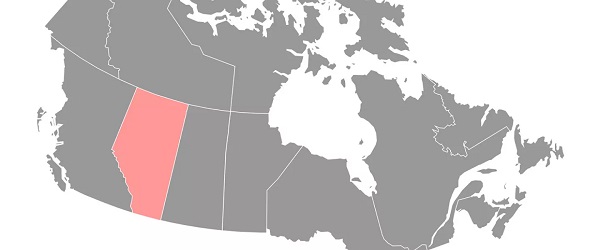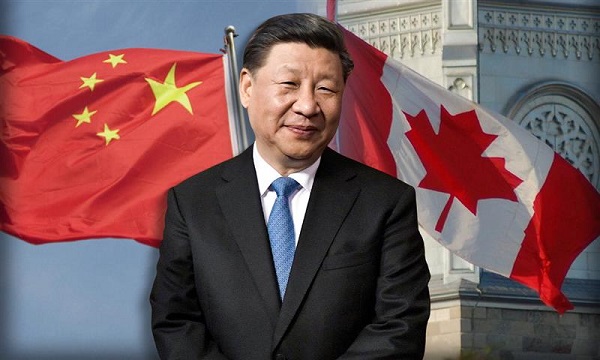Alberta
Alberta relaunch moves into Stage Two on Friday
From the Province of Alberta
Alberta moves to stage two of relaunch
Strong testing data shows active COVID-19 cases in Alberta are lower than expected, meaning stage two of the relaunch strategy can safely begin on June 12, a week sooner than expected.
Albertans can enjoy additional activities in their daily lives while the province continues to open up the economy.
“Albertans have demonstrated the care and common sense needed to move forward with our relaunch earlier than initially planned. Our data tells us our active cases are low, hospitalizations are trending downward and people are taking action to protect those most vulnerable and prevent the spread of the virus. We will continue to move forward together to overcome any tough times ahead, but responsible Albertans should be proud of the vigilance they have shown to date.”
Current data from June 8 show only 355 active cases and 44 people in hospital across Alberta. This is a decrease of almost 70 per cent in active cases since May 14 – when the province began stage one of the Alberta Relaunch Strategy. With its robust approach to testing, Alberta has performed more COVID-19 tests per capita than most other jurisdictions in the world.
As the province enters stage two of relaunch, safety remains the top priority. More businesses, sport and recreation services can open if they are ready. Some larger gatherings for seated audience events will be permitted. In all cases, public health guidance must be followed.
A new interactive map will help Albertans understand the level of risk in their community and learn about any enhanced health measures at the local level, giving additional information on what they need to do to keep themselves and their loved ones safe and protected. Currently, no communities in Alberta need locally targeted enhanced measures.
“More Albertans can now return to work and to the activities so many of us enjoy. However, I encourage you to do it safely. Think of the people in your life who may be at high risk from COVID-19 and protect all those around you as you would want your loved ones protected. Stay home if you are sick. Stay two metres apart and wear a non-medical mask if you can’t. Consider downloading the ABTraceTogether app, and wash your hands often.”
What can open with restrictions
- K-12 schools, for requested diploma exams and summer school, following guidance
- Libraries
- More surgeries
- Wellness services such as massage, acupuncture and reflexology
- Personal services (esthetics, cosmetic skin and body treatments, manicures, pedicures, waxing, facial treatment, artificial tanning)
- Indoor recreation, fitness, and sports, including gyms and arenas
- Movie theatres and theatres
- Community halls
- Team sports
- Pools for leisure swimming
- VLTs in restaurants and bars
- Casinos and bingo halls (but not table games)
- Instrumental concerts
The 50 per cent capacity limit for provincial campgrounds is also being lifted. Over the coming days, the online reservation system will be updated and sites will come online in phases. By July 1, all camping sites will be open for reservations. First-come, first-served sites may open sooner. Information on additional sites will be added to alberta.parks.ca when they become available.
Events and gatherings can be larger in stage two
Maximum 50 people:
- Indoor social gatherings – including wedding and funeral receptions, and birthday parties
Maximum 100 people:
- Outdoor events and indoor seated/audience events – including wedding and funeral ceremonies
No cap on the number of people (with public health measures and physical distancing in place):
- Worship gatherings
- Restaurants, cafés, lounges and bars
- Casinos
- Bingo halls
There is more flexibility for ‘cohort’ groups – small groups of people whose members do not always keep two metres apart:
- A household can increase its close interactions with other households to a maximum of 15 people
- Performers can have a cohort of up to 50 people (cast members or performers)
- Sports teams can play in region-only cohorts of up to 50 players (mini leagues)
- People could be part of a sports/performing and household cohort
Everyone is encouraged to follow public health guidelines and notify others in the cohort(s) if they have symptoms or test positive for COVID-19. If they do test positive or have symptoms, mandatory isolation is required.
Still not approved in stage two
- Social gatherings that exceed above listed maximums
- Regular in-school classes for kindergarten to Grade 12. Classes will resume September 2020
- Vocal concerts (as singing carries a higher risk of transmission)
- Major festivals and concerts, large conferences, trade shows and events (as these are non-seated social events and/or vocal concerts)
- Nightclubs
- Amusement parks
- Hookah lounges (permitted for food and drink only)
- Major sporting events and tournaments
- Non-essential travel outside the province is not recommended. This recommendation will not be lifted until stage three of the relaunch strategy.
The success of stage two will determine when Alberta progresses to stage three. Factors are active cases, health-care system capacity, hospitalization and intensive care unit (ICU) cases, and infection rates. For more information, visit alberta.ca/RelaunchStrategy.
Quick facts
- Relaunch stages include an evaluation and monitoring period to determine if restrictions should be adjusted. Triggers that will inform decisions include active cases, hospitalizations and intensive care unit (ICU) occupancy.
- Active cases, the percentage of positive results and the rate of infection will be monitored to inform proactive responses in localized areas of the province.
- Decisions will be applied at both provincial and local levels, where necessary. While restrictions are gradually eased across the province, an outbreak may mean that they need to be strengthened temporarily in a local area.
- Physical distancing and good hygiene are the most important measures to prevent respiratory illnesses, including COVID-19.
- Clean your hands regularly for at least 20 seconds, avoid touching your face, cough or sneeze into your elbow or sleeve, and dispose of tissues appropriately.
Alberta
The beauty of economic corridors: Inside Alberta’s work to link products with new markets

From the Canadian Energy Centre
Q&A with Devin Dreeshen, Minister of Transport and Economic Corridors
CEC: How have recent developments impacted Alberta’s ability to expand trade routes and access new markets for energy and natural resources?
Dreeshen: With the U.S. trade dispute going on right now, it’s great to see that other provinces and the federal government are taking an interest in our east, west and northern trade routes, something that we in Alberta have been advocating for a long time.
We signed agreements with Saskatchewan and Manitoba to have an economic corridor to stretch across the prairies, as well as a recent agreement with the Northwest Territories to go north. With the leadership of Premier Danielle Smith, she’s been working on a BC, prairie and three northern territories economic corridor agreement with pretty much the entire western and northern block of Canada.
There has been a tremendous amount of work trying to get Alberta products to market and to make sure we can build big projects in Canada again.
CEC: Which infrastructure projects, whether pipeline, rail or port expansions, do you see as the most viable for improving Alberta’s global market access?
Dreeshen: We look at everything. Obviously, pipelines are the safest way to transport oil and gas, but also rail is part of the mix of getting over four million barrels per day to markets around the world.
The beauty of economic corridors is that it’s a swath of land that can have any type of utility in it, whether it be a roadway, railway, pipeline or a utility line. When you have all the environmental permits that are approved in a timely manner, and you have that designated swath of land, it politically de-risks any type of project.
CEC: A key focus of your ministry has been expanding trade corridors, including an agreement with Saskatchewan and Manitoba to explore access to Hudson’s Bay. Is there any interest from industry in developing this corridor further?
Dreeshen: There’s been lots of talk [about] Hudson Bay, a trade corridor with rail and port access. We’ve seen some improvements to go to Churchill, but also an interest in the Nelson River.
We’re starting to see more confidence in the private sector and industry wanting to build these projects. It’s great that governments can get together and work on a common goal to build things here in Canada.
CEC: What is your vision for Alberta’s future as a leader in global trade, and how do economic corridors fit into that strategy?
Dreeshen: Premier Smith has talked about C-69 being repealed by the federal government [and] the reversal of the West Coast tanker ban, which targets Alberta energy going west out of the Pacific.
There’s a lot of work that needs to be done on the federal side. Alberta has been doing a lot of the heavy lifting when it comes to economic corridors.
We’ve asked the federal government if they could develop an economic corridor agency. We want to make sure that the federal government can come to the table, work with provinces [and] work with First Nations across this country to make sure that we can see these projects being built again here in Canada.
2025 Federal Election
Next federal government should recognize Alberta’s important role in the federation

From the Fraser Institute
By Tegan Hill
With the tariff war continuing and the federal election underway, Canadians should understand what the last federal government seemingly did not—a strong Alberta makes for a stronger Canada.
And yet, current federal policies disproportionately and negatively impact the province. The list includes Bill C-69 (which imposes complex, uncertain and onerous review requirements on major energy projects), Bill C-48 (which bans large oil tankers off British Columbia’s northern coast and limits access to Asian markets), an arbitrary cap on oil and gas emissions, numerous other “net-zero” targets, and so on.
Meanwhile, Albertans contribute significantly more to federal revenues and national programs than they receive back in spending on transfers and programs including the Canada Pension Plan (CPP) because Alberta has relatively high rates of employment, higher average incomes and a younger population.
For instance, since 1976 Alberta’s employment rate (the number of employed people as a share of the population 15 years of age and over) has averaged 67.4 per cent compared to 59.7 per cent in the rest of Canada, and annual market income (including employment and investment income) has exceeded that in the other provinces by $10,918 (on average).
As a result, Alberta’s total net contribution to federal finances (total federal taxes and payments paid by Albertans minus federal money spent or transferred to Albertans) was $244.6 billion from 2007 to 2022—more than five times as much as the net contribution from British Columbians or Ontarians. That’s a massive outsized contribution given Alberta’s population, which is smaller than B.C. and much smaller than Ontario.
Albertans’ net contribution to the CPP is particularly significant. From 1981 to 2022, Alberta workers contributed 14.4 per cent (on average) of total CPP payments paid to retirees in Canada while retirees in the province received only 10.0 per cent of the payments. Albertans made a cumulative net contribution to the CPP (the difference between total CPP contributions made by Albertans and CPP benefits paid to retirees in Alberta) of $53.6 billion over the period—approximately six times greater than the net contribution of B.C., the only other net contributing province to the CPP. Indeed, only two of the nine provinces that participate in the CPP contribute more in payroll taxes to the program than their residents receive back in benefits.
So what would happen if Alberta withdrew from the CPP?
For starters, the basic CPP contribution rate of 9.9 per cent (typically deducted from our paycheques) for Canadians outside Alberta (excluding Quebec) would have to increase for the program to remain sustainable. For a new standalone plan in Alberta, the rate would likely be lower, with estimates ranging from 5.85 per cent to 8.2 per cent. In other words, based on these estimates, if Alberta withdrew from the CPP, Alberta workers could receive the same retirement benefits but at a lower cost (i.e. lower payroll tax) than other Canadians while the payroll tax would have to increase for the rest of the country while the benefits remained the same.
Finally, despite any claims to the contrary, according to Statistics Canada, Alberta’s demographic advantage, which fuels its outsized contribution to the CPP, will only widen in the years ahead. Alberta will likely maintain relatively high employment rates and continue to welcome workers from across Canada and around the world. And considering Alberta recorded the highest average inflation-adjusted economic growth in Canada since 1981, with Albertans’ inflation-adjusted market income exceeding the average of the other provinces every year since 1971, Albertans will likely continue to pay an outsized portion for the CPP. Of course, the idea for Alberta to withdraw from the CPP and create its own provincial plan isn’t new. In 2001, several notable public figures, including Stephen Harper, wrote the famous Alberta “firewall” letter suggesting the province should take control of its future after being marginalized by the federal government.
The next federal government—whoever that may be—should understand Alberta’s crucial role in the federation. For a stronger Canada, especially during uncertain times, Ottawa should support a strong Alberta including its energy industry.
-

 2025 Federal Election1 day ago
2025 Federal Election1 day agoPoilievre To Create ‘Canada First’ National Energy Corridor
-

 2025 Federal Election1 day ago
2025 Federal Election1 day agoJoe Tay Says He Contacted RCMP for Protection, Demands Carney Fire MP Over “Bounty” Remark
-

 2025 Federal Election2 days ago
2025 Federal Election2 days agoChinese Election Interference – NDP reaction to bounty on Conservative candidate
-

 Daily Caller17 hours ago
Daily Caller17 hours agoBiden Administration Was Secretly More Involved In Ukraine Than It Let On, Investigation Reveals
-

 2025 Federal Election1 day ago
2025 Federal Election1 day agoLondon-Based Human Rights Group Urges RCMP to Investigate Liberal MP for Possible Counselling of Kidnapping
-

 2025 Federal Election1 day ago
2025 Federal Election1 day agoHong Kong-Canadian Groups Demand PM Carney Drop Liberal Candidate Over “Bounty” Remark Supporting CCP Repression
-

 2025 Federal Election1 day ago
2025 Federal Election1 day agoAlcohol tax and MP pay hike tomorrow (April 1)
-

 2025 Federal Election1 day ago
2025 Federal Election1 day agoFixing Canada’s immigration system should be next government’s top priority









